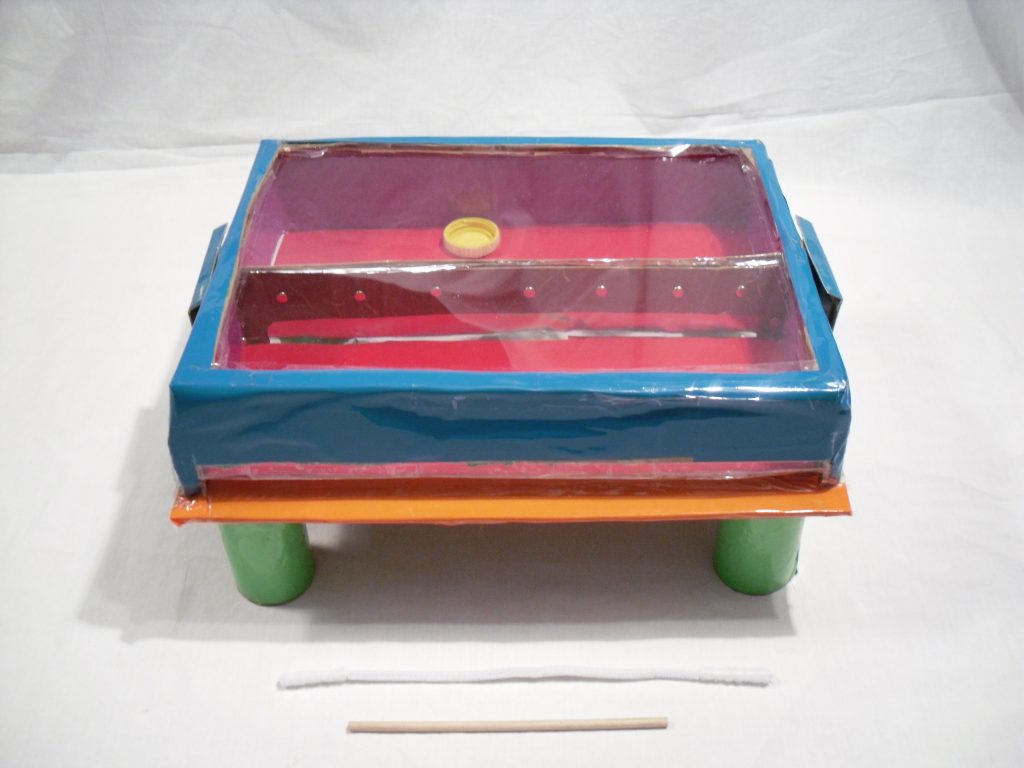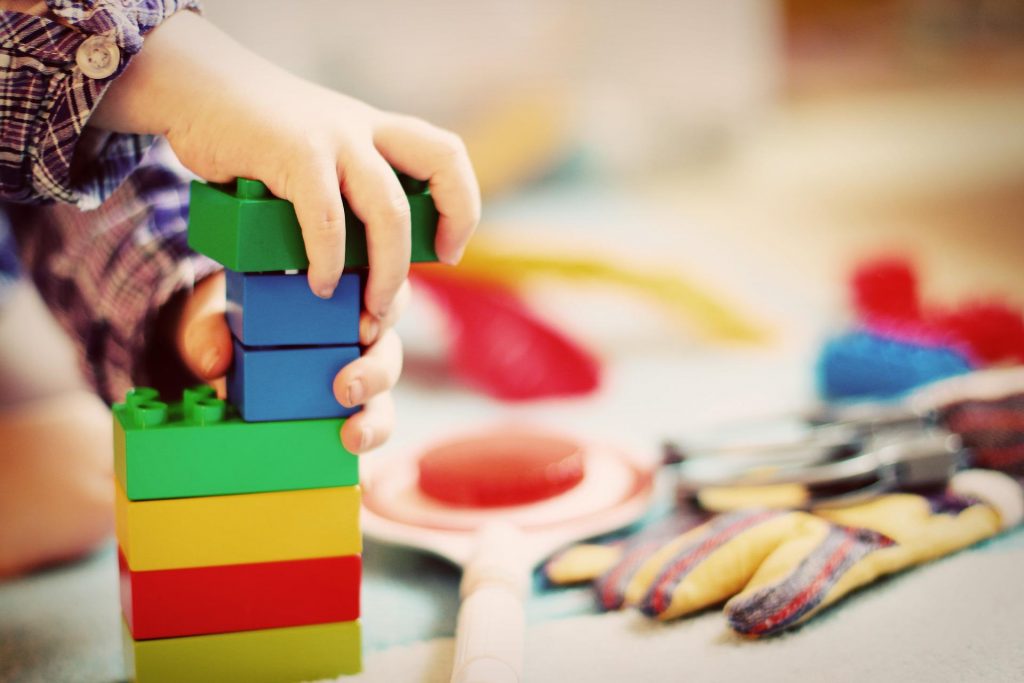Putting it together: Children don’t need to socially learn associative tool use
The paper
Cultured Scene: What is the key finding of your study?
Eva Reindl: In two experiments we show that 3- to 6-year-old children from a Westernized background can invent the solutions to a range of new “associative tool use (ATU)” tasks, i.e., tasks in which two tools have to be used in different combinations. The children find these solutions by themselves, without social learning, and within a very short time (3-4 min). The paper also contains a review table on ATU in animals, updating an earlier review by Shumaker et al. (2011), which might be useful to some readers. Our tasks should be easily adaptable for use with other animals and human groups.

CS: Why is this topic important, and how do you feel it relates to social learning and cultural evolution more broadly?
ER: When comparing human culture with the known cultures of other animals, the differences stick out. Only humans seem to have open-ended (or: unbounded) cumulative culture, requiring the faithful copying of know-how, whereas other animals’ cultures are bounded, relying mainly on socially mediated reinnovations. Our paper focuses on the similarities. Human culture does not arise from zero. Our unbounded landscape of (technological) culture rests on a second landscape which can be explored by individual learning alone: the Zone of Latent Solutions (ZSL). This is the range of abilities that individuals of a species can acquire on their own, that is, through individual learning alone. Both humans and all other cultural animals have this “base” landscape, but in humans it is not well understood. Our paper explores whether associative tool use behaviours fall into humans’ ZLS. Thus, we’re not investigating social learning per se, but the individual learning basis of culture.
The process
CS: How did you arrive at the idea for the study?
ER: I started my PhD with a study investigating whether tool use falls into the human ZLS. We tested this by studying whether young children can invent simple tool-use behaviours by themselves, without the need for social learning. In order to find candidate tool behaviours, we searched the amazing tool-use behaviours of wild chimpanzees and orangutans. However, we focused on “simple” tool use, i.e., tool use in which a single tool had to be used. We explicitly deselected ATU. Yet, I remained interested in ATU, especially because there is quite a lot of experimental work on ATU in non-human animals, starting from Wolfgang Köhler, but very little on humans. I was very lucky that my PhD supervisors Claudio Tennie, Sarah Beck and Ian Apperly at the University of Birmingham granted me the freedom to conduct a few exploratory studies. Two of them are presented in our new paper.

CS: What was the most challenging aspect of conducting the study?
ER: Writing it up and publishing it. These studies were very exploratory, I mainly wanted to see how children react to these tasks – I didn’t have a “story” in my mind before I started (in 2014) nor did I preregister the study. Therefore, making sense of it all and creating a (hopefully) compelling “story” took me years. I remember very well that early on, just after I finished Study 1, I presented my findings at a small meeting. Quite a big name there wasn’t at all convinced by my research on whether young children can solve these tasks by themselves and asked what the point of it all was. That stuck. So when I was finally writing the study up, I tried to do better and extend the paper to offer something to the reader. So now my paper not only shows that children can solve different ATU tasks by themselves, but it also provides a detailed analysis for each of the tasks showing at which points unsuccessful children got stuck. I hope this will be interesting to researchers working on problem-solving, tool use, and innovation who use their own tasks or a variation of mine to illuminate problem-solving behaviour on a more microgenetic level. I also brought my friend and colleague Zsusa Lugosi on board to help me create a review table of ATU behaviours in non-human animals. So hopefully readers of the paper will find some aspects of this research useful for their own work.
CS: What were the best and worst aspects of data collection – any funny stories?
ER: I can’t remember many specific details, because it has been quite some time now, but in general, the best part is having the privilege to spend time with children and meet all these little individuals with their personalities. I am always fascinated by the determination and perseverance of some of these children in solving these difficult puzzles and I love sharing the joy when they solve one. The worst aspects were probably the usual frustrations of child data collection so many researchers know: issues and delays with recruiting nurseries, time pressure in nurseries, or when you just can’t break the ice with a child and they don’t engage with your task. No funny story comes to my mind on this one, but there’s a fascinating anecdote I like thinking back to: In one my tasks you have to use a short stick and poke it into a box to retrieve a pipecleaner. You can then use the pipecleaner to reach until the very end of the box to get a reward. One girl patiently spent a couple of minutes on trying to get the pipecleaner – I watched and thought she had the correct plan in her mind. Then when she finally got the pipecleaner out, she looked at it for a few seconds – saw no use in it and dropped it to the floor, eventually even sitting on it! How wrong was I – that was interesting on many levels.
Publishing
CS: How did you manage the writing process? Was it straight forward, or were there challenges?
ER: See above, finding that “story” and enough aspects to make the paper interesting to readers (not just those interested in the latent solution tests) was a challenge.
CS: How was the peer review process?
ER: Very pleasant, we got super helpful comments by the reviewers and the editor, and the tone was polite, friendly, and professional. I can only recommend Evolutionary Human Sciences. One really good suggestion was on our photos of the tasks. These are now in the supplementary material, but initially were in the main manuscript. You couldn’t really see what was going on in the tasks from these photos and one reviewer asked us to provide more/better photos or a video of the solution process for each task. Unfortunately, I didn’t have the original tasks anymore (they were made from cardboard and slowly fell apart), so I decided to get an illustrator involved. I worked with Nuria Melisa Morales García from www.sciencegraphicdesign.com who made images and animations of our tasks and I hope these will be even more useful to the reader than any photos could possibly be.
What’s next?
CS: Will you be following up on this research? What questions interest you next, based on your findings?
ER: I have always been interested in the role of collaboration in children’s problem-solving. I am currently working with Dr Caroline Wronski from the Fachhochschule Potsdam, Germany, on a project investigating the role of social context (including collaboration) on children’s innovation, using one of the tasks from the paper (link to preregistration here).
CS: As early career researchers, we’re always learning. Is there anything you’d do differently in future, based on your experiences conducting this study?
ER: Preregister the study and increase sample size. Acknowledge more that data collection with children just needs time and huge efforts (for mental sanity).
CS: Finally – what do you think are some of the big questions / challenges facing the field of cultural evolution and social learning?
ER: Finding out more about the cognitive mechanisms that underpin the differences we see between human open-ended/unbounded cumulative culture and the forms of (cumulative) culture of non-human animals. For my part, I am currently interested in the roles of working memory and sequencing. Relating our insights more to the real world – how can we apply our knowledge to inform measures against misinformation, the climate crisis or endangering/extinguishing other species.
About the author
Eva is a postdoctoral research associate working with Prof Rachel Kendal, Prof Robert Barton (Durham University) and Dr Amanda Seed (University of St Andrews) investigating Sequence cognition in primates. She is broadly interested in learning which cognitive and social factors differentiate humans from other great apes. She is interested in sequence cognition, executive functions, social learning, cumulative culture, and tool use, among others.
Eva completed her PhD in Psychology at the University of Birmingham in 2017, working with Dr Claudio Tennie, Prof Sarah Beck, and Prof Ian Apperly on a project investigating the developmental origins of cumulative culture. After that, she held a teaching position at the School of Anthropology at the University of Oxford. In 2018, Eva moved to St Andrews to work as a postdoctoral researcher with Dr Amanda Seed on a project investigating the structure of executive functions in chimpanzees and human children. In 2021, Eva was a lecturer at Birmingham City University, before starting her current job at Durham University in 2022.

